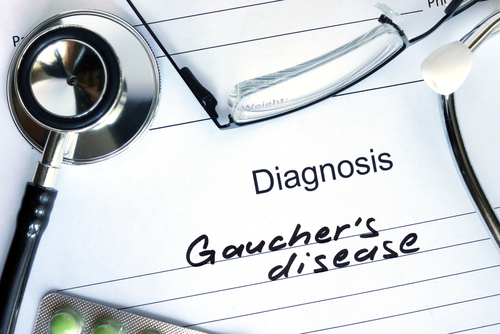An experimental, non-invasive stem cell-based therapy led to improved motor function, prolonged lifespan, and reduced neurodegeneration in a mouse model of neuronopathic Gaucher disease (GD), a study shows.
The study, “Evaluation of a novel, non-invasive iPSC based cell therapy for neuronopathic Gaucher disease,” was recently presented at the WorldSymposium in San Diego.
GD is an inherited disease caused by mutations in the GBA gene. Patients with GD exhibit a buildup of glucocerebroside, a type of fat (lipid), in cellular structures called lysosomes, due to inadequate production of an enzyme that breaks down this lipid.
Gaucher disease is classified into different types depending on whether it affects the central nervous system (CNS), in neuronopathic types, or does not affect the CNS, in non-neuronopathic types.
There are currently a lack of effective treatments for neuronopathic GD, which is characterized by progressive neurodegeneration.
To address this need, the Cincinnati Children’s Hospital Medical Center team developed a non-invasive method of transplanting neural progenitor cells (NPCs), which are immature cells able to multiply and mature into neurons and other CNS cells. They are derived from induced pluripotent stem cells (iPSCs), which are able to generate all cells and tissues in the body.
Investigators used a subclass of NPCs that have VLA4, a protein that plays a key role in immune response. VLA4 enables systemically given NPCs to cross the blood-brain barrier.
These cells were transplanted to a mouse model of neuronopathic GD through intravenous injection. The cells had a fluorescent marker to enable them to be seen.
Results showed transplanted cells in diverse mouse brain areas — brain stem, midbrain, and thalamus. They had matured into neurons, as well as astrocytes and oligodendrocytes, which are other CNS cell types that make up the glia — which supports and protects neurons.
These mice showed improved gait and delayed worsening of hindlimb clasping, which is a marker of disease progression in mouse models of neurodegeneration.
Results also indicated increased lifespan, reduced neurodegeneration in transplanted brain areas, decreased inflammation in the brain and spinal cord, and improved oxygen consumption in mitochondria — the cellular organelles responsible for energy production.
“These results demonstrated the potential efficacy of non-invasive delivery of iPSC-derived NPCs to improve neuropathic phenotype in the mouse model of neuronopathic Gaucher disease,” the researchers wrote.
The study also showed the feasibility of cell therapies to enable personalized treatment strategies for Gaucher disease and other neurodegenerative diseases, they said.


